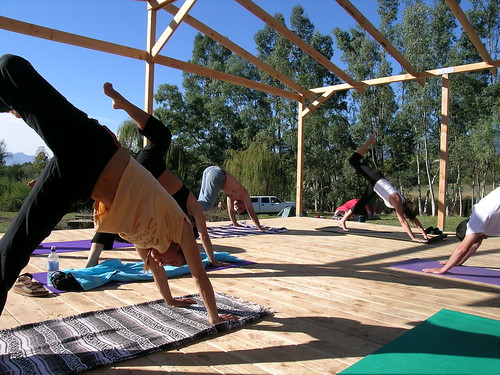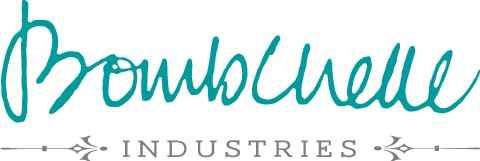
I am hereby declaring January a month that is a No Man’s Land and is not 2012 yet, and is really just an extra planning month. (Yes, you can do that over halfway through the month. I checked.)
See, I got back from the holidays at the end of December, and in between the physical and emotional fallout from the holidays (travel sure takes it out of you!), I wasn’t really back on my feet until the end of the first week in January…immediately after which, I co-lead the Day of Genius with Melissa, and hoo boy, if I thought travel was exhausting, I should have waited until after I had the experience of leading an 8-ish hour retreat. I mean, fun and exhilarating, but also exhausting. I was tired and feeling funky all the week after, which I thought was probably just energetic fallout, but no, it was in actuality the start of a hellacious cold/flu-thing that had me waking up on Sunday night convinced my teeth were going to fall out because my head hurt so bad.
POINT BEING:
I am only just now getting to the point where I have the physical, mental, & emotional energy & wherewithal to look back at 2011 and forward at 2012 and plan and dream. I did some planning for 2012 at the beginning of December, but I’ve already changed some of those plans. And I thought, “surely I can’t be the only one who wasn’t prepared to go straight from the holidays into planning the new year and doing it well and then jump right back in to things.”
Hence, this post – a resource for everyone else who feels the same way! It’s meant to be a comprehensive guide that’s whole-life-encompassing, so grab a mug of tea and settle in, my friend.
Goals vs. Resolutions
Kathryn recently wrote a post about goals & resolutions that I think has some good points. I used to be surprised that people made a big difference between goals & resolutions, but I think that’s because my resolutions usually turned out to be goals (just ’cause that’s how I think & all). After seeing the way most people do resolutions, I don’t necessarily think they’re evil, but they should be handled very carefully.
Here’s the thing: resolutions are usually the start of a goal. They’re expressing a wish or a hope or a dream. This is good and is part of the process. But you cannot stop there, because a wish is not the same as action, and a wish doesn’t usually give you a place to start.
For example, when Gretchen Rubin set out on her happiness project, she started with “I want to be happier”. But that’s not where she stopped. After she decided that that was really something she wanted to take action on, she did research into what makes people happier. She came up with a plan – areas she was going to focus on each month, and specific steps she was going to take in each of those areas – and a way of tracking her progress, and kept herself accountable with a public blog.
It’s a good idea to dream and think really big about what you want to do, be, feel, have this year – those are your resolutions. But after you’ve dreamt big, it’s time to come back down to earth & fill in the details so that you can actually start on things. This means taking a resolution that’s vague as mist, and translating it into a measurable, actionable goal, with a plan to back it up.
Making Good Goals
But how do you do that? Let’s use another example. Say you have a resolution of, “I want to feel better physically.” Where you could go with that is figuring out what areas that would involve taking action in – the food you eat and the physical activity that you do throughout your day are two big ones.
From there, you could go further into the food you eat, and decide to do a series of 30 day trials eliminating specific things from your diet, and seeing how you feel without them. (I’m a big believer that there is no “one size fits all” diet and that we all just have to experiment & see what works, so that’s the course I’d recommend, anyways.) Or you could decide to eliminate soda from your diet, or another kind of junk food.
Or you could go further into the physical movement side of things, and decide that you’re going to do 15 minutes of yoga every day while at your desk (if so? I’ve got you covered). Decide that you’re going to walk at least five miles a week. And so on.
We’ve all read that SMART acronym at one point or another but to be honest I can’t tell you what all of the letters stand for (specific, measurable, possibly actionable, and after that I’m lost). As far as I’m concerned, here’s the three most important things to start with:
- Specificity. You need to know what you’re doing, how much you’re going to do, and how often you’re going to do it, and if you have a deadline, what that deadline is.
- Measurable. Again, you need to know how much. Something I am always & forever saying that holds true here too, is that if you don’t know what “done” is, you have no idea when you’ll reach it. Or if you’re halfway there. Or at 75%. That feeling of having no idea where you’re at on the progress bar is incredibly demotivating.
- Actionable. You need to know where to start. This is one of the places where stopping at a resolution can bite us in the ass – something like “I’m going to feel better this year” is great, but where are you going to start?
Resources for creating resolutions + goals:
Useful workbooks:
Create Your Magical Year ($20 – not an aff link since I haven’t used it, though Molly makes great things)
2012 Creating Your Goddess Year workbook ($10 – aff link since I have used it and it’s amazing)
The Plan Your Year Kit ($15 – my product, so I can vouch for its quality 😉 )
Breaking It Down Into Areas
If you’re having trouble even knowing where to start with your reviewing/resolutioning/goal process, here’s my suggestion: break your life down into areas. I’m not a huge fan of compartmentalization (read: I believe it’s pretty much impossible and is a silly idea), and I’m sure you’ll notice that there’s significant overlap between these areas, but this is a place for you to start – with sample review questions to get you started and resources + tools to help you out with any changes you want to make.
Work/Livelihood

Shiba Inu not required, but seriously recommended.
We spend a lot of time working. Whatever your philosophy on work is (it should be easy, it should be hard, forty hour work week vs. four, and so on), you’ve got to agree: it shouldn’t suck. Ideally, you feel good about the work that you do and enjoy doing it.
Things to consider:
- Is my work fulfilling? Do I feel like I’m having the kind of impact that I want to have on the world?
- “Fulfilling” means not only satisfying, but developing the full potential of. Am I using all of my potential at work?
- How do I feel when I get done with an average workday? (Tired but happy = good. Exhausted, drained, and upset = no bueno.)
- What kinds of activities could I incorporate into my work day to make it more fulfilling for me? If I’m in a position that I can’t immediately change, how can I make things better in the meantime?
Resources + tools:
- The Morning Whip – Erika has created something truly amazing with the Morning Whip, and if you’re finding yourself utterly dissatisfied with your work but not knowing where to go, or knowing where to go and not knowing here to start, I would highly highly highly recommend investing in a round. February is already full up, but it runs on a regular basis, so you can get whipped in April.
- Managing Yourself: What Brain Science Tells Us About How to Excel
For figuring out what sort of work you might be best suited for:
Body

If you’re having trouble with your body, it can (& often will) permeate every other area of your life and make you generally miserable. And for many of us, our lifestyle doesn’t necessarily lead to being connected and present within our bodies, and can instead lead to a pretty disharmonious relationship with it. Obviously there’s a lot of aspects to your body & your relationship with it that I can’t fully cover here – I welcome more suggestions in the comments.
(Note: I’m aware the perspective here doesn’t fully encompass individuals with disabilities, who can, depending on the disability, have to deal with a debilitating level of pain on a regular basis. I can’t speak from or for that perspective; if you have any recommended resources, please do throw them in the comments so I can add them to the post. Thanks!)
Things to consider:
- Stop and really take stock of your body for a few minutes. Breathe deep and notice. Ask yourself: are there any aches and pains that I’ve just got used to, that didn’t used to be there?
- Keep track of your body for a few days and see what you notice. Recurring headaches? Bad posture when you sit?
- How do you feel after you eat?
- Do you eat when you’re hungry & stop when you’re full?
- Are you mindful of what you’re eating? Do you know what the bulk of your diet consists of?
Resources + tools:
I just got an iPhone, and can I say – holy crap, there’s so many apps that are useful for this. There’s Nexercise, which gives you “points” for exercising and tracks your exercise, with the incentive of possible free prizes, medals you can earn for specific things, and I think there’s even more it can do (I just downloaded it the other day & started playing around with it, so I haven’t tested its full capabilities). Basically, they “gameified” exercise – totally brilliant.
Other apps:
- Runkeeper, which is not just for running but walking, cycling, etc. – it tracks all of your data so that you can see how many miles you’ve gone in a week or a month, what your best times are, and so on
- Nike Training Club
- Daily Yoga
- This Lifehacker article mentions a few food based apps – unfortunately, from what I’ve found, a lot of the food tracking and diet oriented apps aren’t going to work for everyone, depending on how you eat/your personal diet doctrine, etc. (For example, tracking calories doesn’t do any good if you’re still eating crappy food.)
Non-app resources & tools:
- Gini Martinez is a body genius. Period, full stop.
- Dealing with this side of things can bring up a lot of emotional issues. Mara is a genius when it comes to talking about body-related things and about how we can maintain self-love in our daily lives. I highly recommend her blog.
- In case you missed it earlier, Carrie, one of the guest presenters at the Day of Genius, did a presentation on yoga at your desk, which was totally brilliant – and then she recorded & re-posted some of the poses she went through, for everyone. Personally, I’m going to try & start incorporating that into my life on a daily basis!
- Meg Worden & her book Salad Alchemy (which I’ve heard great things about)
- If you’re wanting to further your relationship with your body in other ways, Ev’Yan has got ya covered at Sex, Love, & Liberation.
Spirit

When I say “spirit”, I don’t just mean things like religion or spirituality, I mean a more general sense of your well-being in a way that isn’t quite covered by the labels “body” or “mind”. Things like your happiness levels, how satisfied you are, and so on. Of course, “spirit” also does apply to religion & spirituality, as well
Things to consider:
- Do I feel satisfied spiritually?
- If I go to a church, temple, or other religious group, is it a plus in my life – or is it just a neutral? Do I leave services/rituals/ceremonies feeling happy or feeling blah?
- Does my work affect others in a positive way?
- Do I feel happy on a regular basis? Am I excited about my life and about things in the future?
Resources + tools:
- Consider finding a charity to volunteer at – you can use Network for Good to search for one, and you can also check out VolunteerMatch. If you honestly don’t have the time to volunteer, consider donating on a regular basis.
- If you want to look at different religious and spiritual beliefs, and see what calls to you, do some research on world religions. If you’re living in a bigger city, you can find meetups organized around most any religious or spiritual group, so that you can check them out in person; and if it’s a more organized religion, you can head out to the local temple/church/place of worship and see what goes on there.
- If you want to work on being happier, check out the Happiness Project (which I loved) for a lot of ideas on where to start.
Mind

Boredom: a big fun sucker. (Not very surprising, that.) If you aren’t intellectually stimulated on a regular basis, it can be hard to get interested in anything else.
Things to consider:
- How often do I find myself bored out of my skull?
- Is the work that I’m doing engaging me on a mental level?
- When was the last time I read a truly thought-provoking book or had an incredibly interesting conversation?
- Do I find it hard to focus at work because it’s too easy for me?
- When was the last time I learned something new?
Resources + tools:
- Check out your local community colleges – they often have continuing education classes at a very reasonable price on a variety of subjects. (Austin Community College has everything from German to physics to Aikido!)
- I’m currently reading Moonwalking with Einstein, and it’s a pretty amazing book – covers a lot of science about memory and hasn’t bored me yet.
- Get a library membership! You’d be amazed what you can find at the library or get through ILL, and the you can’t beat the price.
- ReadItFor.me is a new thing that looks pretty awesome – I signed up although I haven’t got to fully test it out yet, and Shenee has raved about it to me. Great for people who want to read more but lead busy lives.
Relationships

Humans are social creatures for the most part. Whether you’re introverted or extroverted, there are very likely relationships in your life that are important to you, and the quality of those relationships is important to your quality of life.
Things to consider:
- Am I honest in the relationships in my life?
- Is there anyone that I spend time with more out of obligation than anything else, and is there a way to do less of that?
- Am I excited about having (person) in my life in the future?
- Do I practice compassion in my relationships, towards myself & towards the other person?
Resources + tools:
- Danielle Dowling is a professional soul sister + relationship remixer, who regularly writes smart Q&A articles on the topics of relationship & dating on her blog
- Mentioned before under “Body”, Ev’Yan’s website Sex, Love, & Liberation is a great resource for here, too
- Loving With Power
- Communication is vital to any relationship, and one of my favorite books on the topic is Fierce Conversations
Money

Ah, money. Very few things (except sex, I suppose) bring up as many conflicted feelings in our society as money. We’re afraid of feeling greedy, we’re worried about never having enough, we have hoarding tendencies, and so on.
Things to consider:
- How does money make me feel? Am I always stressed and fearful of it, no matter how much or how little I have?
- What’s my definition of “enough” when it comes to money?
- Do I know how much money I need to pay my bills, groceries, and other necessities every month?
- Do I know how much money I spend every month – and on what?
Resources + tools:
- Christyna Lewis is a financial coach – this is her area of specialty. I’m going to be working with her soon & I am SO EXCITED about it, let me tell you. If you aren’t quite ready for one on one work, there’s still her blog.
- Tara Gentile has actually written a whole book about this subject (which, full disclosure, I bought but haven’t read in full yet) and regularly writes about it on her blog. She’s even holding a live event in February (you can enter to win free tickets here).
- The Daily Worth, great for its frank money talk
- Suggestion from Steven in the comments – not sure how this one slipped my mind – but Adam Baker at Man vs. Debt has a lot of resources, paid and free, on eliminating debt
- Apps again: Lemon is a great and easy to use app to track your spending; PageOnce keeps track of all of your bills & when they’re due as well.
Creating a Timeline
After that review process, you’ve probably got a good view of where you’re feeling satisfied, where you’re not, and where you can start changing things. The next step is to come up with a timeline.
This doesn’t have to be dry & boring – in fact, during the Day of Genius, one of the attendees (Steven, who is a big smartypants) showed off his timeline and it was gorgeous, complete with visual depictions of what would be going on during any given month and milestones depicted as well. It’s very helpful to have an at-a-glance representation of not only what your goals are for each month, but what else will be going on that month (some things on my timeline: SXSW, WDS, my birthday & Matt’s, our anniversary).
Once you’ve blocked out the events that are going on each month, try and figure out how your goals relate to those events and the rest of the year. It’s probably not a good idea to attempt to move several thousand miles in the same month that you get married if you want to stay anywhere in the realm of level-headed (ask me how I know this).
If you’ve created measurable goals, you’ll be able to “stair-step” them – break them down into smaller chunks that you can focus on, one at a time. For example, if your goal is to run a marathon in October, you can use a regular running habit to reach that goal; starting with running five miles a week, moving up to ten, and then fifteen, and so on. Figure out where each stair-step goes time-wise, and put that on your timeline too.
30 Day Trials
One tool that many people have used to give new things a try is doing a 30 day trial. This lets you get a taste for the habit/change and see how it fits into your life & affects your life, and it’s also a neat psychological trick that we can play on ourselves. If you say to yourself, “Okay, I’m going to try this for thirty days”, it’s not nearly as intimidating as saying, “Okay, I’m going to change this area of my life for forever.” (Shocking, I know.) And, a handy aside is that once you’ve done something every day for 30 days, it’s a lot easier to keep doing after that. I haven’t used this tactic before but I’m going to try it this year, mostly with diet related things to see how I react.
Resource on 30 day trials:
- Johnny B Truant did several 30 day trials last year – you can read his first post about it here, or read the rest of the 30 day trial posts here.
Staying Motivated & Making It Stick
Okay, so you’ve got your goals all planned out, your 30 day trials are in your timeline…what next? Maintaining the motivation & actually making your new goals and habits stick.
To stay motivated, it’s really useful to know your “reason why” for a specific goal or project. What drives you to do it? Is it curiosity or something deeper? Sometimes our motivations are external (my parents want me to), sometimes they’re internal; external motivations are not always bad but can be more difficult to keep up, and it’s important to be aware of & recognize where the motivation is coming from.
Another handy thing is to know what excites you about each goal. We often start on something with all of the enthusiasm of a five year old at a birthday party, only for it to fizzle out later. If you’re consciously aware of what excites you about a particular goal or project, you can remember it and come back to it later to rekindle the fire.
When you’re working on making your habits stick, you need to remember that willpower is a very finite resource, and relying on nothing but willpower is why many attempts to add new habits or stick to a resolution fail. My philosophy is that we can & should use other things to support our habits so that our willpower is a last resort instead of a first defense. For example, you can get an accountability buddy, who has a similar goal to your’s, that you check in with on a regular basis. Or you can modify your environment to support your goals – adding reminders of your new routine and your motivation to it, and removing temptation (if you don’t want to eat gluten? throw out the flour!).
This is where it’s a good idea to put most of your effort – on planning how, exactly, you’re going to make your lifestyle changes sustainable. An unsustainable change won’t stick around, in which case, all of the tools in the world can’t help you.
Resources for staying motivated & making it stick:
And that, my friends, is how you plan an amazing year.
What’s your planning process look like?









